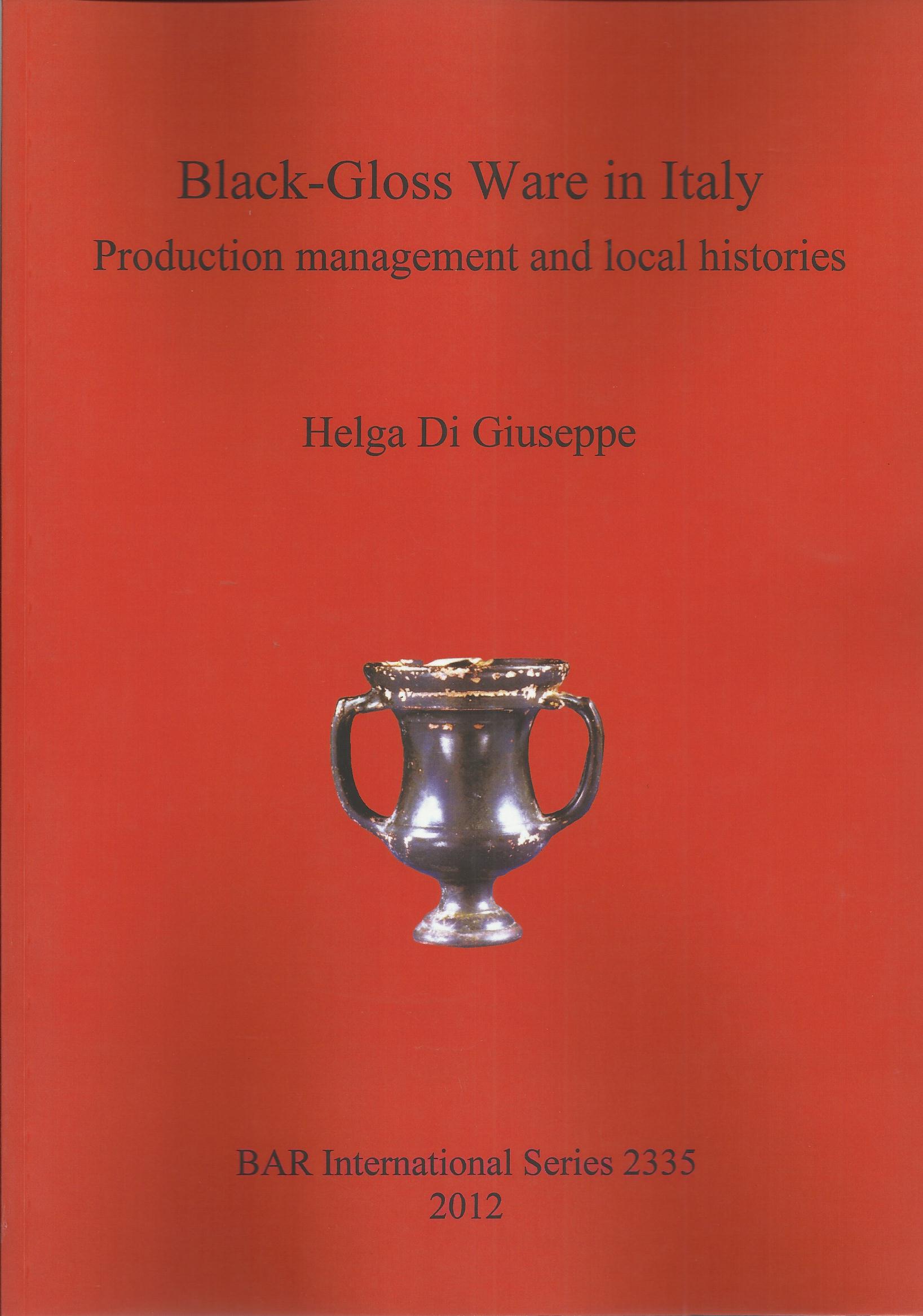Black-Gloss Ware in Italy Production management and local histories - BAR International Series 2335
- Anno: 2012
- Autore/i: Di Giuseppe Helga
- Catalogo: BAR British Archaeological Reports
- Argomento: Archeologia
- ISBN: 978140730918
- ISSN:
Black-gloss ware is a fine ware produced from the 4th to the 1st centuries BC – in some areas until the early Empire – and used as table ware, for funerary vessels and for ritual purposes. This ware developed in part from later Attic production, spread widely in the Mediterranean, and in part from local traditions. This work focuses on two main topics: A reconstruction of the geography of black-gloss ware workshops in ancient Italy, including aspects of the organization and management of production; and a proposal for a new approach to the study of black-gloss ware with the aim of compiling local and regional histories of ancient Italy in relation to the growth and development of Roman power. Whoever studies the Republican period will inevitably come across black-gloss ware and all its complexities. This class of vessels represents one of the main chronological and cultural indicators of this period and can reflect, in the development of its shapes, decorations and its quantitative distribution, the process of meetings between Rome and the various cultures of ancient Italy. In some parts of Italy the appearance of black-gloss ware takes place at the same time as Roman expansion, with the foundation of colonies and the spread of Roman cults. The study of black-gloss ware, therefore, also necessitates studying the course of the Roman military conquest and consequent integration of the peoples of ancient Italy, as well as trading patterns and the movements of the craftsmen, who carried the techniques, styles and methods of decorating pottery typical of their original region, to the new colonies to which they moved.
CONTENTS
Acknowledgments; List of figures; List of tables; List of literary sources
Introduction
Chapter 1. Black-gloss ware: a brief history of the studies and methodology of the present work
1.1. A brief history of the studies (The question of terminology; Antiquarian approaches and the first attempts at classification; The approach of Jean Paul Morel; Classification and use of microscope; The sociological approach, Summary)
1.2. Methodoly of the present work (A geography of the black-gloss ware’s production centres; The historiographic approach; Black-gloss ware and the weighted average; The chronology of black-gloss ware; The body of material used in the research: Etruria and the rest of Italy; The South Etruria survey; The excavation of the Roman theatre of Vallebuona at Volaterra; The relationship between pottery and the life of a site)
Chapter 2. Theoretical models for the organization of black-gloss ware production (The pottery production process; Craft production in Republican and Imperial Italy; The case of the kilns at Scoppieto; The temple economy; Factors affecting pottery production in the Republican to Imperial periods; Some observations on black-gloss ware production according to Morel’s models)
Chapter 3. Black-Gloss ware. Forms of production and management from the 4th to the 1st century B.C.
3.1. Distribution of kilns (The centres of production in southern Italy: Sicily, Calabria, Basilicata, Campania, Puglia, Molise; The centres of production in central Italy: Abruzzo, Lazio, Umbria, Marche; The centres of production in central-northern Italy: Tuscany, Emilia Romagna; The end of black-gloss ware production in Italy; The meaning of kilns distribution in Italy: Urban and rural productions; The wealth of the sanctuaries: The case of Locri EpizephyriiI; The case of Herakleia; Other cases
3.2. The producers of black-gloss ware in literary and epigraphical sources (The chronology of black-gloss stamps: an open problem; The potter and forms of craftsmanship in antiquity; Stamping in southern Italy; Stamping in central Italy: the case study of Lazio; Stamping in northern Italy; A model of production in sanctuaries and land holders; Conclusion: black-gloss production and the continuation of the temple economy
Chapter 4. Historiographic approach to black-gloss ware. Consumption and local history in Italy (Black-gloss ware consumption in southern Italy; Black-gloss ware consumption in southern Etruria/Lazio and in northern Etruria; Some considerations; The wider historical context. Crisis or no crisis? The time-worn problem of the 2nd century B.C.; Toynbee and Hannibal’s Legacy; The South Etruria survey and the debate at the time; The re-examination undertaken by the Tiber Valley Project; The demographic questions; Concluding comments
Chapter 5. Conclusions
Bibliography; Index of toponyms
F.to 21x29, Brossura, pp. 198, Ill. b/n



